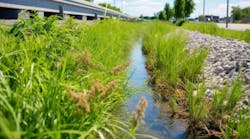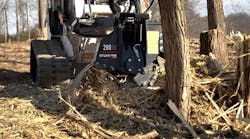Crops need rainwater to flourish, but new research is showing that too much can make it harder for soil to absorb water.
While the idea that soil particles rearrange themselves in response to environmental conditions is not new, scientists once thought these shifts in the ground happened slowly. Not anymore.
A study published today in Science Advances shows that increased rainfall actually reduces the rate at which water can move into the soil and that this change happens fast—it only takes a few years or decades, not centuries as scientists previously assumed.
University of California, Riverside soil scientist Daniel Hirmas, who participated in the study, said via Jules Bernstein, UC Riverside's senior public information officer, that the repercussions of rainfall-induced changes to soil’s ability to absorb water extend beyond agriculture.
“These findings mean that more water heads into streams or lakes instead of into the ground, potentially increasing susceptibility to flash floods,” he said.
“The ability for soil to store carbon is also dependent on groundwater,” he said. “Thus, carbon stores may be impacted via this change in soil properties. There is the potential for carbon to move into other places either in the environment or atmosphere if it isn’t being retained in the ground as much.”
Hirmas and a team of scientists from Rutgers, Temple, University of Kansas, Kansas State, and Colorado State universities examined the dirt from different plots of prairie land in Kansas. Some of the soil had been subjected to 25 years of simulated extra rainfall from sprinklers and some were not.
They found that the architecture, meaning the organization of particles and large pores in the samples, of the soil samples from the sprinkler-irrigated and nonirrigated sites were different.
In the irrigated soil, infiltration rates were reduced substantially but water retention modestly increased. Plant roots clogged the open pores more often, causing samples to retain slightly more water than the soil not affected by simulated rainfall. The roots respond to extra water either from rain or atmospheric humidity, taking up residence in and reducing the space available in soil pores.
The team also found irrigated soils were less able to expand or contract because of more constant soil moisture conditions. Soil expands when it gets wet and shrinks when it dries. If conditions are more consistently wet, the expansion and contraction don't happen as much.
These findings are likely to have implications for climate modeling work.
“Future climate models need to account for these dynamic soil changes to more accurately predict effects of climate change on groundwater, carbon storage, and food security,” said Hirmas.
Read more information on the study here.





